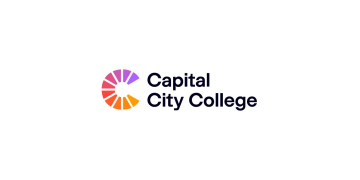Support for T levels remains buoyant among schools, colleges and independent training providers, but the qualifications still face a host of challenges, writes Suzanne Straw
This week, NFER published an update to its summer T levels report. Our previous study highlighted significant enthusiasm for the new qualifications, alongside some key challenges. In this latest update, as providers move closer to accepting their first T level students, they continue to be enthusiastic about their preparations and positive about progress regarding work placement flexibility and UCAS points.
However, despite preparations going well, there remain underlying concerns in key areas, particularly awareness of T levels. Providers are optimistic about the Department for Education’s NexT Level awareness raising campaign, launched in October this year, but whether it will gain sufficient traction with parents/carers and prospective students ahead of decision-making on post-16 options remains to be seen.
In our earlier T level interviews and the roundtable discussion held with providers and wider sector representatives in October, providers raised concerns about their ability to gain timely access to schools to speak to students and make them aware of T levels and other technical and vocational pathways.
Of course, this was something that the ‘Baker Clause’ aimed to help with. Introduced in January 2018, it stipulates that schools must allow colleges and training providers access to every student in years 8 to 13 to discuss the non-academic routes available to them.
Providers have set modest targets for their first round of student recruitment
However, research carried out by IPPR one year after its introduction showed that the clause had made minimal difference, with more than 70% of colleges saying they were still finding it difficult to access schools in their area.
It will be important that the national awareness raising campaign is sustained beyond this initial recruitment phase. Providers have set modest targets for their first round of student recruitment, with an estimated 2,000 students taking the first T levels from next September. To put this number into perspective, there were 594,000 young people in England who were aged 16 at the start of the academic year in September 2018.
Whilst providers are generally confident about achieving their initial student targets, they are concerned about the recruitment of larger numbers in the longer term, particularly without ongoing awareness raising and further clarification around two other issues of key importance to students.
The first relates to progression routes from T levels. Providers we spoke to welcome the allocation of UCAS points. However, universities are free to decide whether they will accept the qualifications at all. Reservations have already been expressed by Russell Group universities and questions raised regarding the types of courses T level students may be able to progress onto. The decisions of Russell Group universities could influence other universities and have the potential to tarnish T levels in the minds of parents/carers and prospective students.
Further questions remain around progression to apprenticeships. Although challenging to deliver, the time allocated to the industry placement is an important selling point for T levels. However, there is still uncertainty as to whether completing a T level will enable learners to progress onto a level 4 apprenticeship due to lack of occupational competencies. This is a particular issue for more practically-orientated apprenticeships such as construction and engineering.
Other potential challenges expressed by providers in recruiting students relate to the size of the qualification and the number of guided learning hours. For young people reliant on part-time jobs and/or who have caring responsibilities, the time commitment may prove too great and at odds with the current flexibility provided by qualifications such as BTECs, which are available in a range of sizes and can be studied alongside A levels.
These are just a few of the concerns expressed to us throughout our conversations with providers over the course of this year. They are not the only ones. The enthusiasm and commitment of the colleges, independent training providers and schools we have spoken to is not in question. They are determined to be as ready as they can be for September 2020 and to deliver high-quality qualifications. However, whether students will have sufficient awareness, understanding and confidence to choose them remains to be seen.








The entry route apprenticeships into healthcare and healthcare sciences are level 2. T-Level and apprenticeship rules means that after completing the T-Levels in those subjects they would be ineligible for any of our entry apprenticeships ( the level 4 apprenticeships are for our experienced staff who are progressing).
Basically you would be selling a young person a dud if you tell them to do the T-Level in this occupational area as ‘it will lead to an apprenticeship’. In Healthcare and Healthcare science subjects T-Levels would contradict the very purpose they were designed for